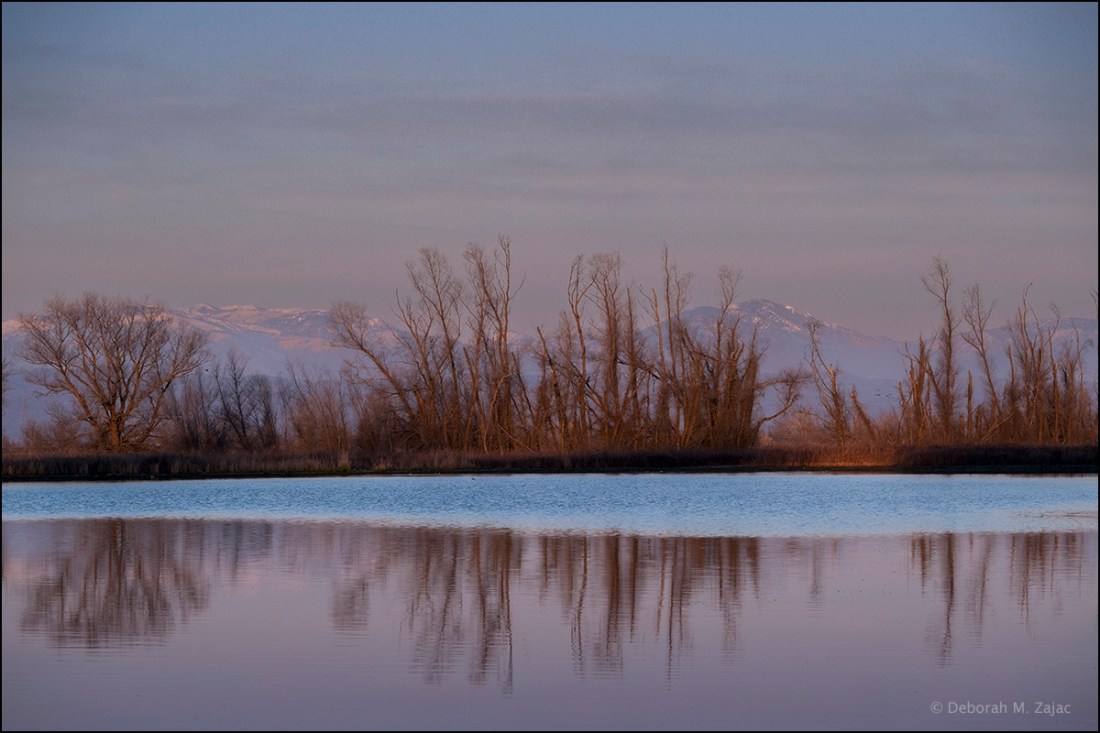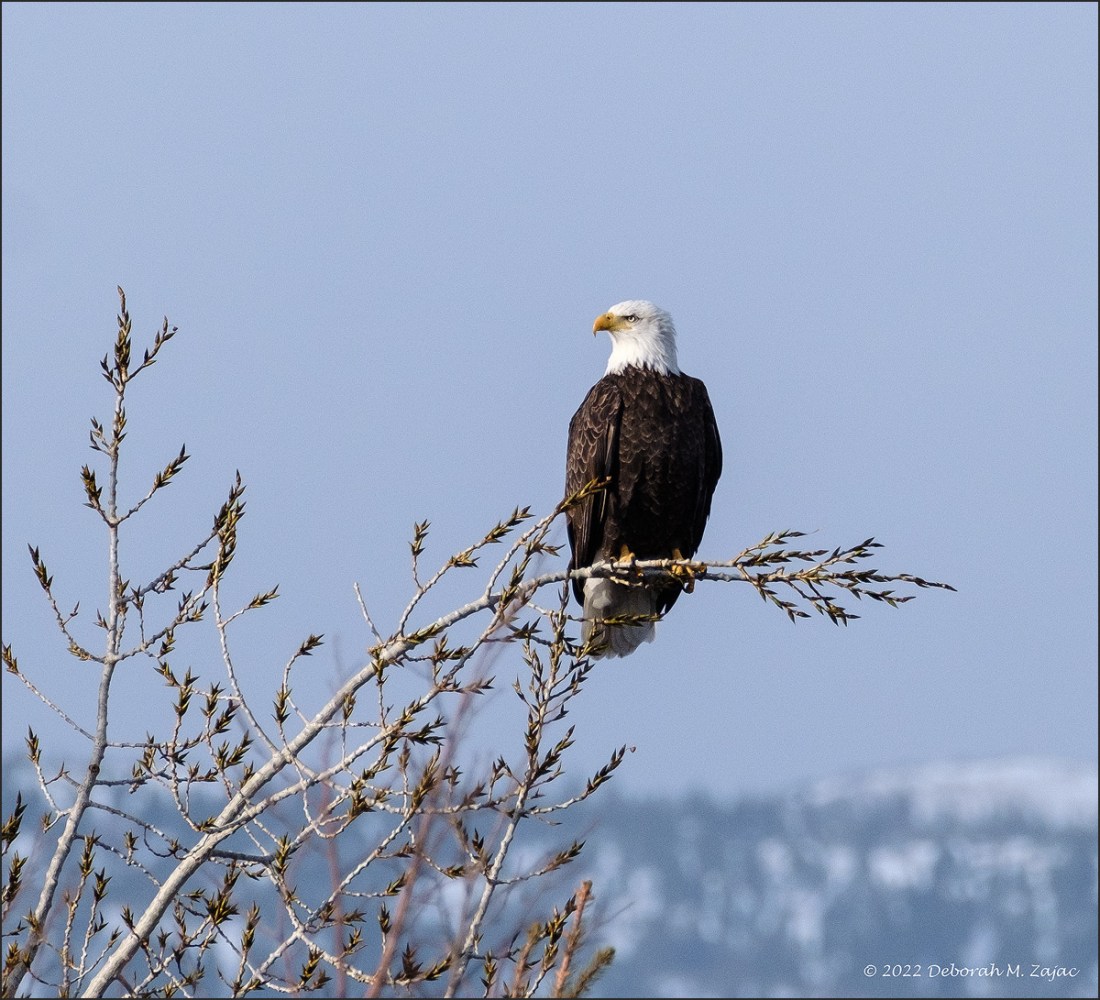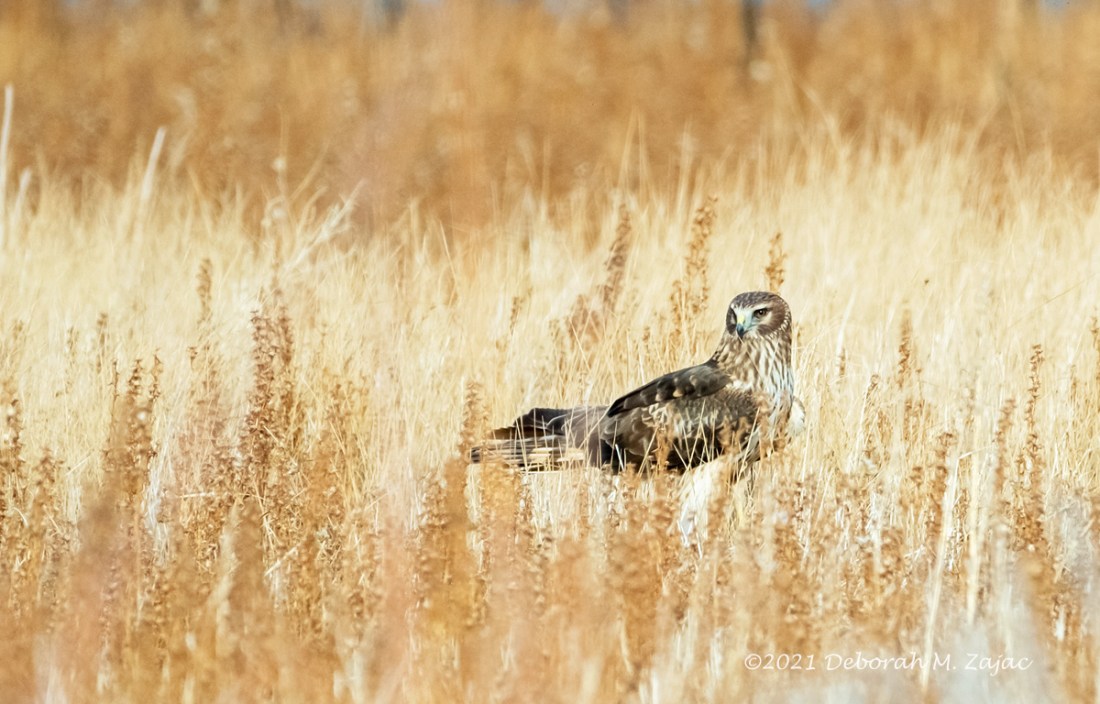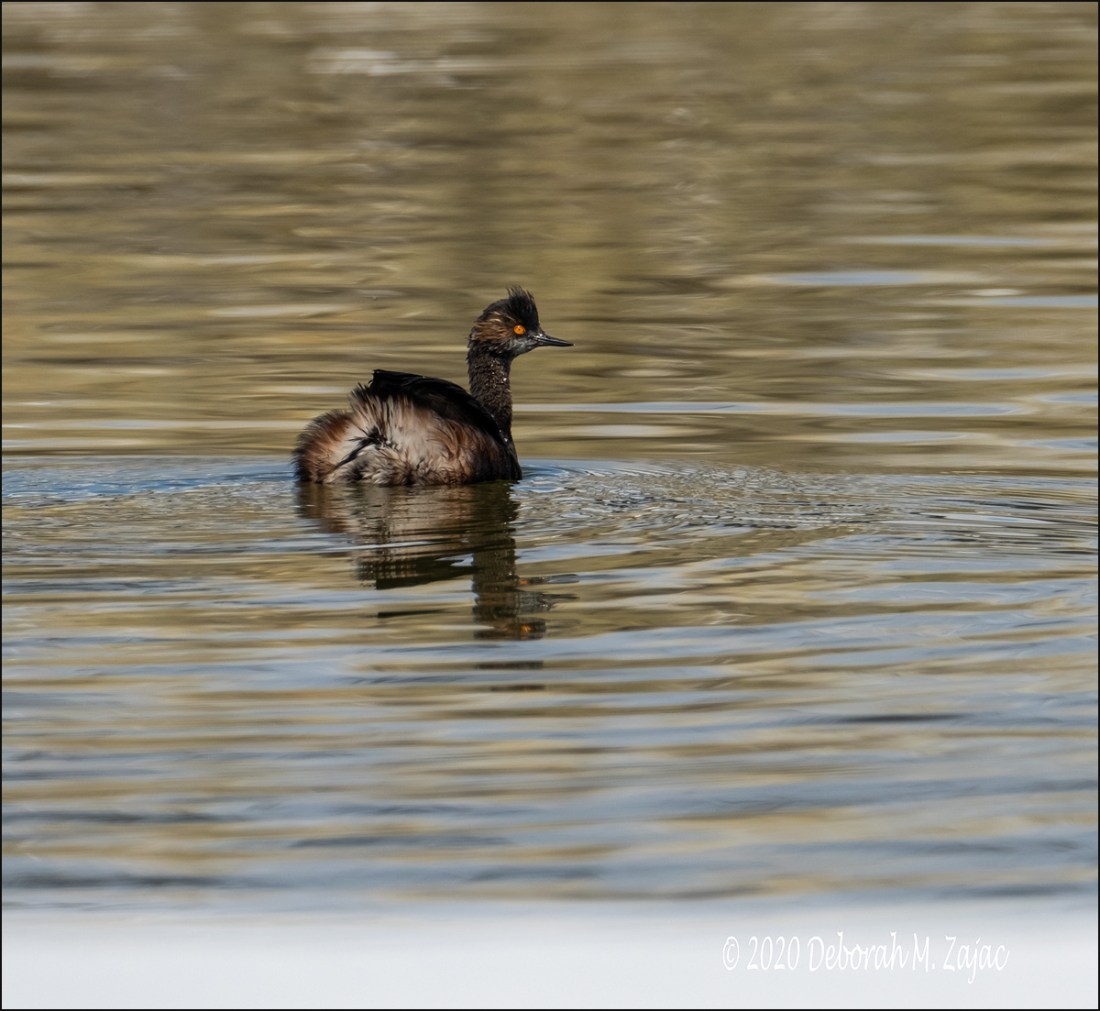Copyright ©2023 Deborah M. Zajac. ALL RIGHTS RESERVED. DO NOT USE MY IMAGES WITHOUT EXPRESSED WRITTEN PERMISSION!
After having to postpone a trip to California to do some birding with friends 2 times due to weather I was finally able to cross the mountains and make that meetup last weekend.
We had a lovely day weather wise. It was sunny, not windy, and thankfully not muddy from all the rain and flooding the area had had.
On my way to meet the group I stopped at a refuge along the way just after daybreak to see if there were birds on the pond. There were hardly any but, oh, it was pretty.

I wanted to drive the auto route to see what birds were in the other ponds but, every thing beyond the platform pond was closed due to flooding. I hung around for a bit hoping some more birds would fly in, but the birds that were flying overhead kept on flying…I wondered where they were headed since it wasn’t this lovely pond they were headed for? What was wrong with this pond?!!
I left to meet up with my friends at Sacramento National Wildlife Refuge just up the road about 20 miles.
I took just over 700 hundred images but, after my first culling I have a smidge over 200 keepers, and quite a few of those are duplicates that will require a second culling to really hone it down and free up much needed disk space. That second culling is so hard. Do you find it as hard as I do to let go of those? I feel like I need those as back up images! It’s nuts I know especially as I have a two fold backup system in place for my images and yet…it’s so hard to let some of those duplicates go!
I’ve only processed two of my images so far. The top image in this post and this Red-Shouldered Hawk. I had to work so hard for its image. I was driving around the auto-route and this bird was on the passenger side of the road way up high at the top of this dead snag. I couldn’t see it from my seat. I had to reposition my car kinda kaddy wompass, and hope no one else came up behind me while Gordon a fellow blogger from https://undiscoverdimagesamongstus.wordpress.com/who was in the back seat and I photographed this bird.
I have a console between bucket seats in the front so I wasn’t able to slide over to get my camera out the window. Lemme tell ya this wasn’t an easy shot. I wanted to be where Gordon was… in the back seat just then. 😀 It was worth the effort though. Isn’t it handsome! fyi- We’re not allowed outside of our cars while on the auto-route. There are a few spots where we are but this spot wasn’t one of those.

Red-Shouldered Hawk
I don’t see this bird very often so I was very happy to get a decent image of it.
It was good birding but, there were fewer birds than have been at this refuge in past years at this time of year. I’m guessing they know something we don’t and maybe winter will be ending sooner than we think and the birds have been heading home to the north already. I hope that’s it anyway.
It was even better hanging out with dear friends while birding. I hope it’s not too long before we can get together again. We’re hoping for a February trip. Fingers crossed that happens!
I’ll be working on more images from this trip to share too but, if you know me it may be awhile before more images from this trip make it to the blog.
Oh, we have a big event in our family this week. Littlest will be 4 years old this week! Time flies! He’s still really into Dinosaurs, but he’s moving into the Superhero phase, and #1 Grandson has him into Pirates and Colonial American characters as well, but his birthday party theme is Legos! #1 Grandson got him into those as well. Aren’t big brothers the best!! 💗
Baby Girl sent this image of him with a couple of his birthday party decorations. He LOVES that Lego head…so does #1 Grandson! 😜

What’s happening in your life this week, any plans, events, or something new going on?
Fuji X-T3| Fuji 100-400mm| PS CC 24.1.0
more to come…











You must be logged in to post a comment.